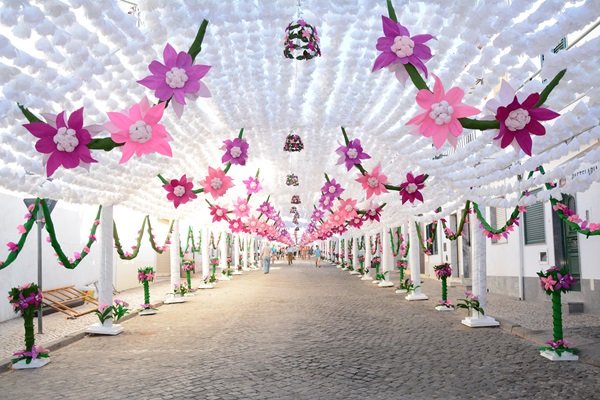The central eastern corner of the Alentejo is a special place. Just north of the A6 highway, not far from the historic town of Elvas is an enclave set between cork forest, vineyards and castle - the realm of Campo Maior.
The tree lined road that leads the fortified towns of Campo Maior and Ouguela runs parallel to the Spanish border about 2 hours east of Lisbon. Each place with its own unique story to tell, these destinations offer travelers a glimpse into moments of Portuguese history and culture.
Campo Maior: A Tapestry of Tradition and Heritage
From Elvas, it is a short drive to Campo Maior, a picturesque Alentejo town full of history and coffee. Legend has it that Campo Maior was chosen as a refuge by a group of people seeking safety from Arab invasions, a testament to its strategic location and natural beauty.
Today the prosperous town boasts a rich architectural heritage, from its castle to the beautiful Parish Church with its macabre Chapel of the Bones. Explore the Republic Square, not far from the town pillory, Santo António Convent, and green town park with its eateries and cafés. Local museums include the sacred art museum, castle museum, and coffee museum.
Here too is one of three Chapel of Bones in the Altentejo, along with Évora and Monforte.
This 1766 chapel was said to be connected to the explosion of the castle’s armory due to a lightning strike leaving some 316 dead. But a recent restoration found that the bones may have come from the churchyard of the Igreja Matriz, which was rebuilt after the explosion, and the bones then transferred to decorate the new chapel.
Today the castle retains its original towers and medieval walls. Each tower has a vaulted ceiling and the walls that circle the original village of Campo Maior with a series of canon emplacements.
In addition to its cultural treasures, Campo Maior boasts rolling natural landscapes, including the lakes on the Caia and Abrilongo Dams, perfect for outdoor adventures and water activities.
Don't miss the opportunity to visit the Delta Coffee Museum, a tribute to the region's thriving coffee industry. This is the center of coffee production for the Iberian Peninsula. Delta Cafés was founded by Rui Nabeiro, a former smuggler, in 1961 in a tiny warehouse. By 1995, the company had grown to control almost half of Portugal’s coffee market. From there the company expanded in many directions, including a major winery that is open for tours, the Adega Mayor.
And, you can really experience the magic of Campo Maior during the UNESCO World Heritage Festas do Povo, where the entire town comes alive with vibrant paper flowers, transforming the streets into a colorful garden. See thousands upon thousands of flowers in all the streets of the town. And, a new museum lets you experience the festival any time.
Discovering Ouguela: A Tale of Ancient Fortifications
A drive north is a trip back in time as you explore the walled castle village of Ouguela, perched high on a cliff overlooking the Abrilongo river right next to Spain. Like Marvão, Óbidos and Monsaraz, the walled town is well preserved, but not at all crowded. This imposing fortress, with origins dating back to the pre-Roman period, stands with a medieval wall and tower, as well as later gun positions. Once known as "Budua" during Roman rule and "Niguela" under Visigothic occupation, Ouguela has witnessed centuries of warfare, contraband and growth.
Today, Ouguela has a peaceful and medieval charm, inviting visitors to explore its history and rural hiking trails. A peaceful place in the middle of nature where you can enjoy listening to the birds: Wander through ancient cobbled streets lined with whitewashed houses and discover the remnants of ancient civilizations. From the castle walls, you can see the nearby Spanish castle of Albuquerque, a reminder of the region's strategic importance.
As you explore Ouguela, you'll find the remnants of that role as guardian of the frontier, including the Castle of Ouguela itself, which is both a 13th century castle and 17th century fort. Despite its turbulent history, Ouguela is today a slice of tranquility, offering visitors a serene escape amidst the beauty of nature.
Whether you're exploring the ancient walls of Ouguela or immersing yourself in the traditions of Campo Maior, these charming Alentejo towns promise an unforgettable journey through history and nature.
José Gama is a Certified Guide from Alentejo.



